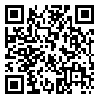Volume 6, Issue 2 (22 2010)
irje 2010, 6(2): 25-31 |
Back to browse issues page
Download citation:
BibTeX | RIS | EndNote | Medlars | ProCite | Reference Manager | RefWorks
Send citation to:



BibTeX | RIS | EndNote | Medlars | ProCite | Reference Manager | RefWorks
Send citation to:
Khalkhali H, Hajizadeh E, Kazemnezad A, Ghafari A. The Prediction’s Trend of Graft Survival in Renal Transplantation with Chronic Allograft Dysfunction. irje 2010; 6 (2) :25-31
URL: http://irje.tums.ac.ir/article-1-82-en.html
URL: http://irje.tums.ac.ir/article-1-82-en.html
The Prediction’s Trend of Graft Survival in Renal Transplantation with Chronic Allograft Dysfunction
Abstract: (14025 Views)
Background & Objective: Clinically Chronic Allograft Dysfunction (CAD) is characterized by a progressive decline in Glomerular Filtration Rate (GFR) over time, the pattern of disease progression determined by the five-stage model. In this paper, we used Erlang and Hypo-exponential distributions as Phase- Type distributions to describe hazard of kidney failure at over time in RTR with CAD.
Methods: In a single-center retrospective study, 214 patients with RTR with CAD were investigated at the Emam Hospital of Urmia University of Medical Sciences from 1997 to 2005. Kidney function at each visit assessed with GFR and categorized based on NKF and KCOQI staging system.
Results: The estimated hazard rates of disease progression from stage 1 to 2 , 0.0378 from stage 2 to 3 ,0.04 from stage 3 to 4 , 0.0458 and from stage 4 to 5 0.0541 were respectively based on each expected month . This estimates yield a mean waiting time of disease progression from stage 1 to Kidney failure or dialysis 91.63 month. The 18th, 58th, 118th and 155th months of death-censored graft survival were 0.99, 0.75, 0.25 and 0.10 respectively.
Conclusions: The findings of this study are compatible with hyperfiltration theory in chronic kidney disease and give us more detailed information about the daynamic process of disease which would help to manage it effictevliy.
Methods: In a single-center retrospective study, 214 patients with RTR with CAD were investigated at the Emam Hospital of Urmia University of Medical Sciences from 1997 to 2005. Kidney function at each visit assessed with GFR and categorized based on NKF and KCOQI staging system.
Results: The estimated hazard rates of disease progression from stage 1 to 2 , 0.0378 from stage 2 to 3 ,0.04 from stage 3 to 4 , 0.0458 and from stage 4 to 5 0.0541 were respectively based on each expected month . This estimates yield a mean waiting time of disease progression from stage 1 to Kidney failure or dialysis 91.63 month. The 18th, 58th, 118th and 155th months of death-censored graft survival were 0.99, 0.75, 0.25 and 0.10 respectively.
Conclusions: The findings of this study are compatible with hyperfiltration theory in chronic kidney disease and give us more detailed information about the daynamic process of disease which would help to manage it effictevliy.
Keywords: Phase-Type distribution, Hypo–exponential distribution, Graft Survival, Renal Transplant Recipients, Chronic Allograft Dysfunction
Type of Study: Research |
Subject:
General
Received: 2009/12/1 | Accepted: 2010/03/1 | Published: 2013/09/1
Received: 2009/12/1 | Accepted: 2010/03/1 | Published: 2013/09/1
| Rights and permissions | |
 |
This work is licensed under a Creative Commons Attribution-NonCommercial 4.0 International License. |





